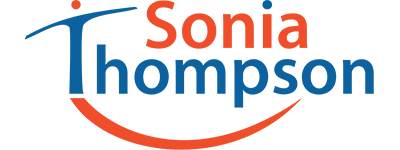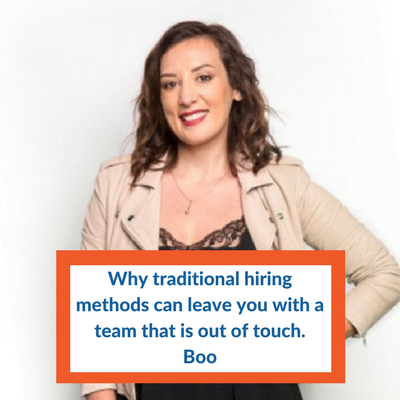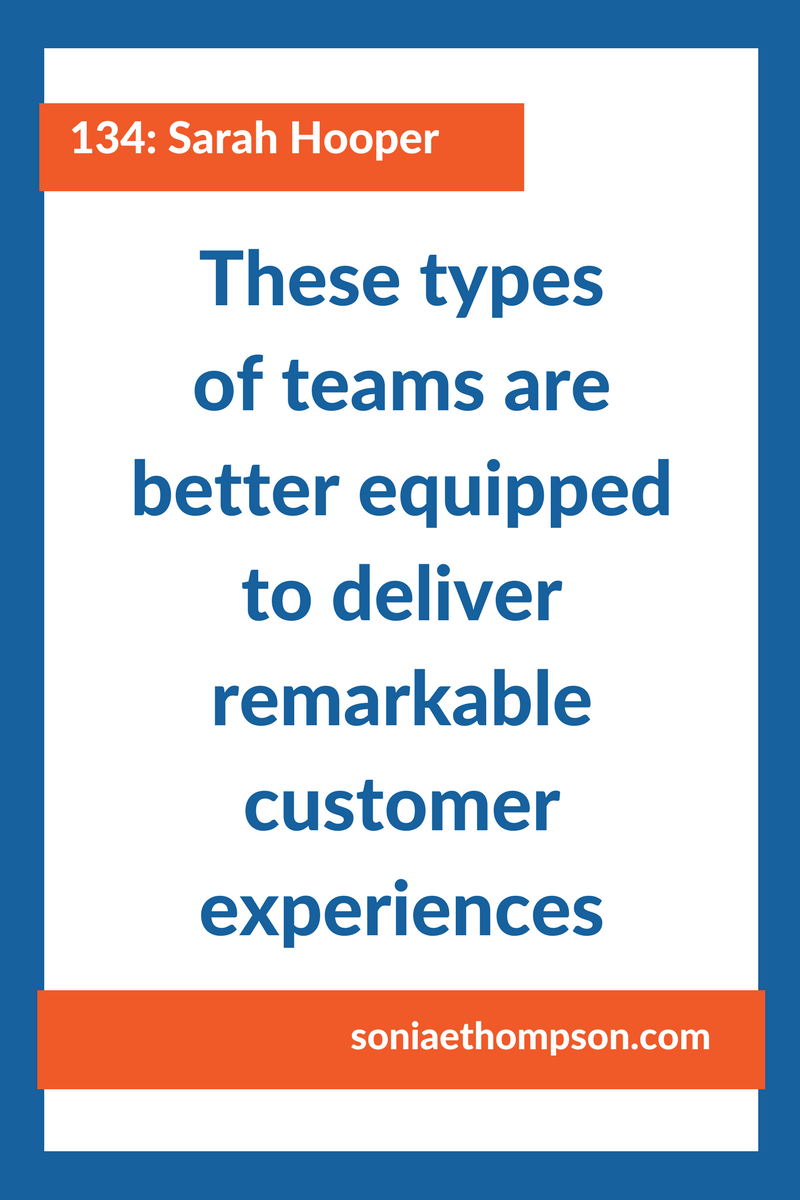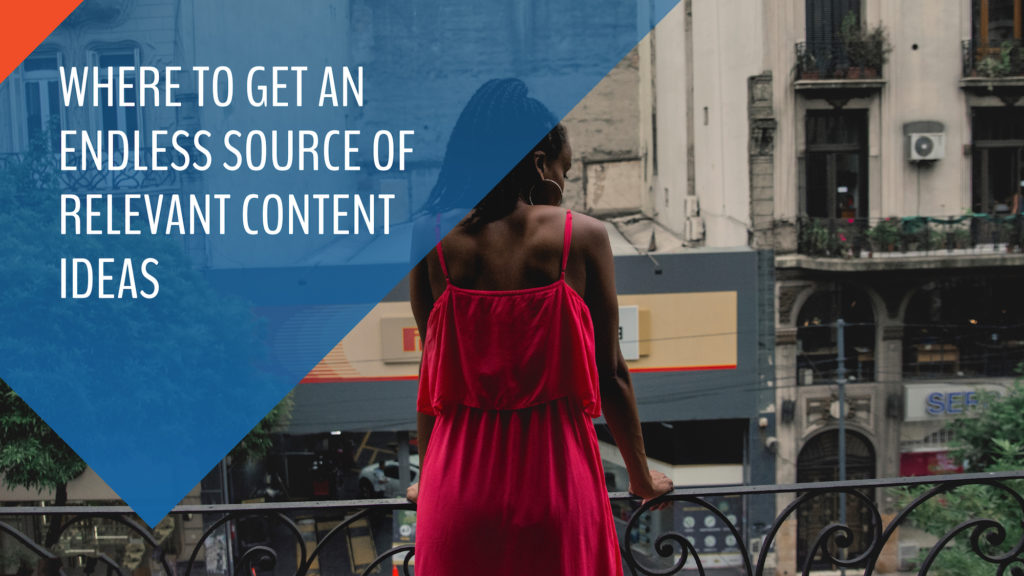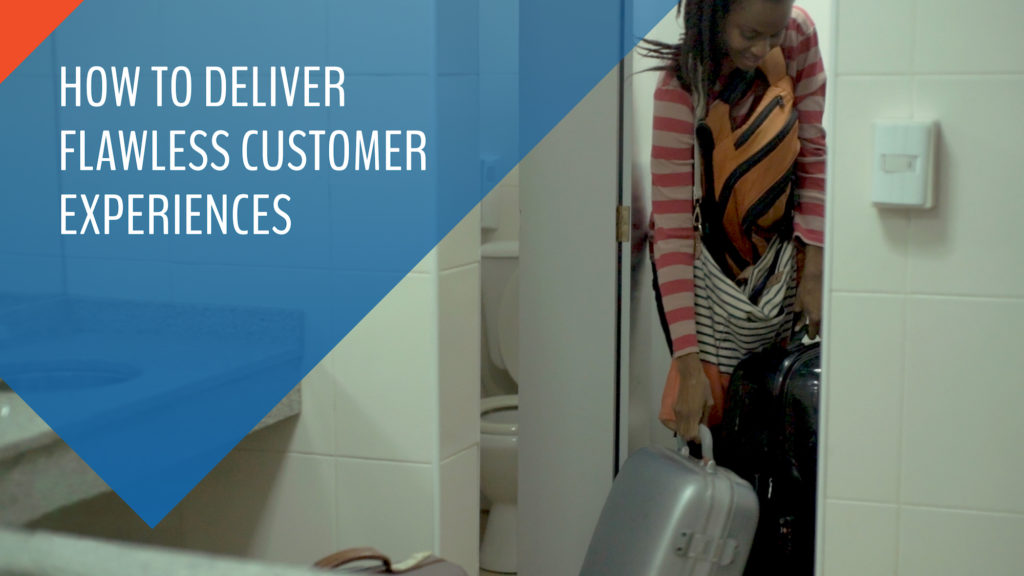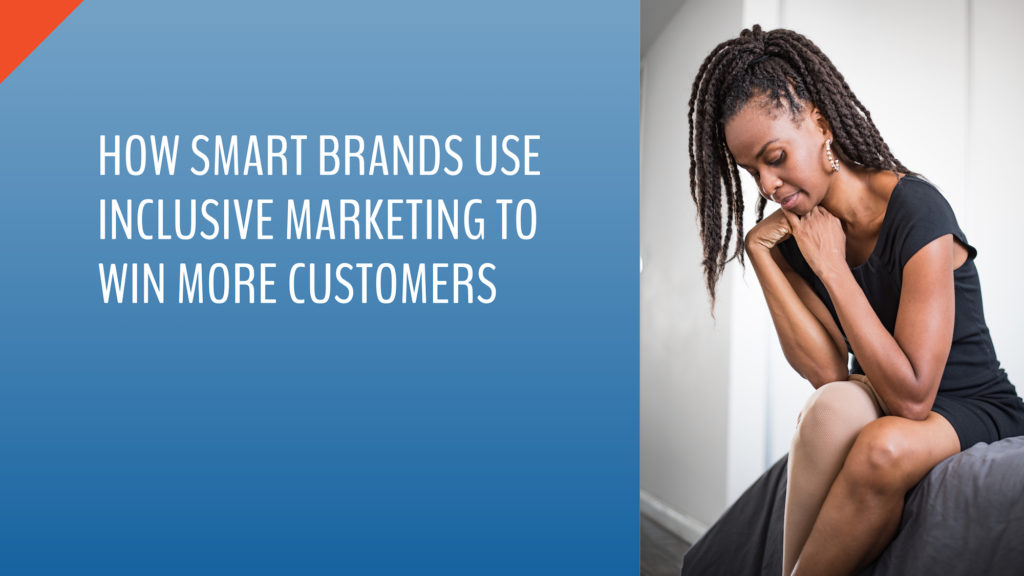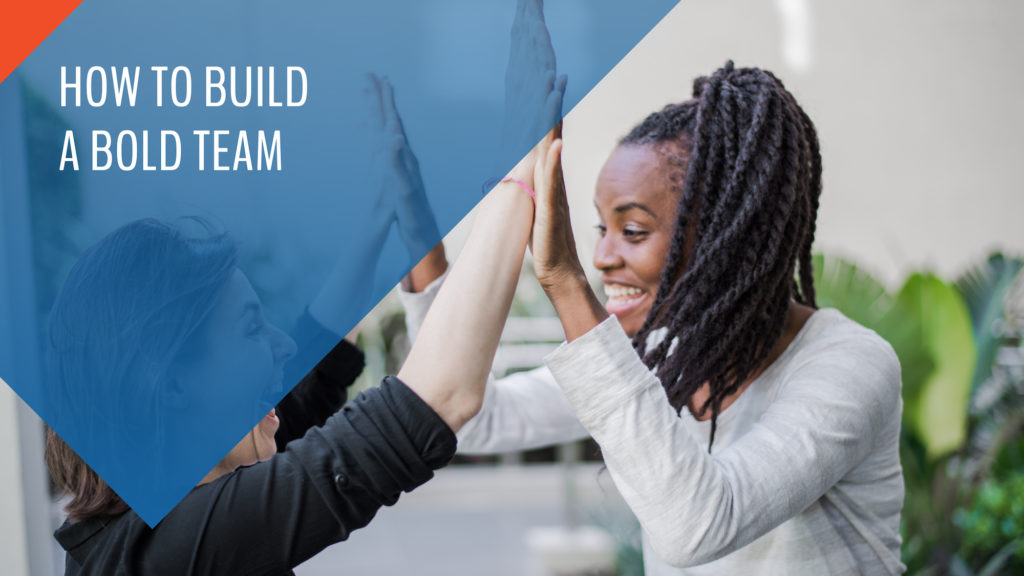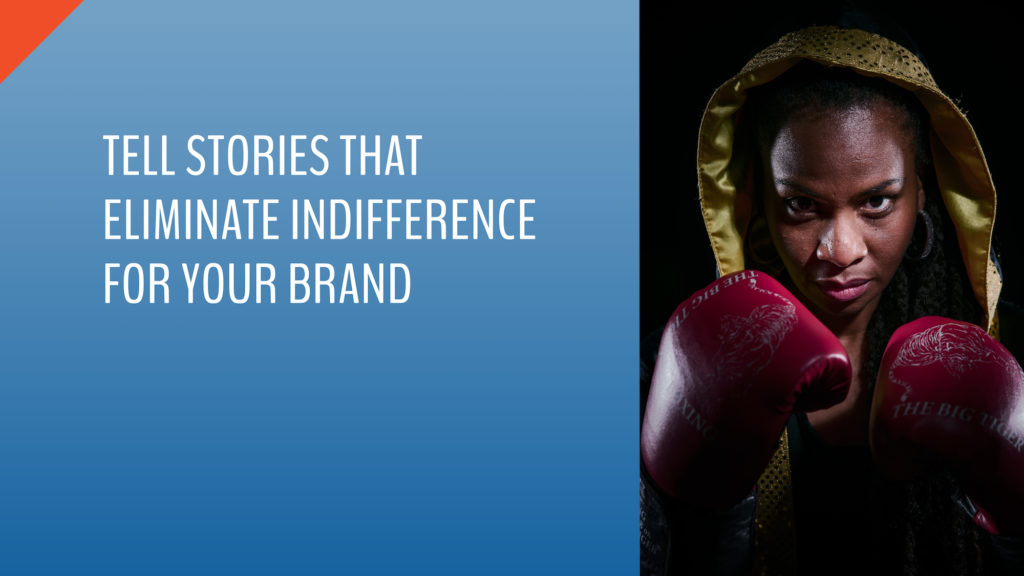Sarah Hooper is president and co-founder of A-OK Collective, a creative agency focused on creating remarkable experiences for clients such as Puma, Warner Brothers, and Viceland.
We can learn a ton from Sarah, including her go-to strategy for finding great talent.
Key points:
- Why your brand needs to create more “wow” moments
- What you need to create an authentic and supportive connection with your customers
- The pre-requisite your team needs to create remarkable experiences for your customers
- Why you should encourage your team to have their own side-hustle
- A smart strategy to connect with women and other diverse customer groups that haven’t historically been served well in the past
- The skill you need most when cultivating a high-performing team that solves your customers problems like none other
- How to cultivate a rock-start team, even if you don’t need one yet
Listen to the 27-minute episode here:
Watch the episode here:
Read the transcript of the interview here:
How remarkable customer experiences fuel deeper connections with your customers
Sonia Thompson: Hello Sarah.
Sarah Hooper: Hello.
Sonia: Thank you so much for joining me today. How are you?
Sarah: Thank you. I’m doing great. Thanks for having me.
Sonia: My pleasure. All right, well, let’s go ahead and dive right in. Tell me about your business, A-OK Collective.
Sarah: Yes. A-OK, we are a boutique creative agency that has a real focus on experiential and a love and heart for culture itself.
Sonia: Got it. Now, I’m going to dive into a couple different things that you said. Such a succinct statement, but lots of questions. What is the specific problem that you solve for the people you serve?
Sarah: We find ways to connect brands to culture in not only an authentic way, but then we also are able to deliver upon a really unforgettable live experience. Yes, we do things that are not live that live more in an influencer program or something that’s a bit more digital, et cetera, but our true I guess thing that we’re the best at is that wow moment of, “I can’t believe I just experienced this,” and, “Wow, it’s actually a brand that brought this to me, so this is really interesting.”
Sonia: Got it. That was going to be my question. You said that your focus is on experiences, the experiential aspect of marketing. What exactly is that? You just said this wow moment, and I’m like, “Absolutely, I want this, right? I may want more of this, and I feel like so often, businesses don’t bring this to us. Can you describe what exactly that is and what that might look like in practice?
Sarah: Yes. My background specifically is I used to have a free festival in Brooklyn for around five years. It was once an abandoned public pool in Williamsburg, Brooklyn, and then on the waterfront of Williamsburg. What I sort of tell people is there’s this moment when you watch a fan, and a fan has this, “Okay, I’m outdoors. There’s a slip and slide over there. My favorite band is playing,” and you just see them light up.
That to me was always what we wanted to bring to the brand experience. If you could take a moment where everyone is just, they’re there together, but they’re also experiencing something that feels very personal, and by some chance a brand was actually able to help you have that moment, that to me is where a real connection can be made that not only feels authentic, but it feels supportive. It feels like a brand is actually supporting the things that you love, the things that you care about, and maybe even showing you they care about them, too.
Sonia: Right. I like how it’s about bringing a moment to you that is meaningful, and it’s not necessarily about, “Hey, I want you to buy my stuff.” That’s the result of it, but it’s the moment that seems much more of a caring atmosphere is the prerequisite for it.
Sarah: Usually, the type of brands that we work with, it is a brand that wants people to know more about them, about their story. It’s not just about, as you said, “Buy my product, buy my product.” It’s like, “Please step into our world because we think we have a really interesting world and we want you to be part of that world.” It’s hopefully a co-creating space together.
How to create defining moments that draw your customers closer to you
Sonia: Got it. You mentioned that a lot of the cultural, you’re starting to connect culture to this a lot more. Can you talk a little bit more about what that means and how that elevates the experience in any way?
Sarah: Totally. Well, specifically culture is something that’s important to everyone at my agency. It’s a prerequisite of being part of this agency. All of the seniors, myself included, have a real background in having promoted, loved, been a part of real culture changing moments since we were young. It was really important to us that that be a real part of what we’re doing, because to be frank, it’s what we’ve always done. It’s how we even know how to think and affect the world and see what we do is through that lens.
Small things and big things happen, everything from, “Hey, we’ve got this artist. They’re perfect for this event. Let’s try this. It’s going to be really great. They’re in your budget and you’re going to love this moment,” to we did this really cool thing for Warner Brothers Pictures with Wonder Woman this year where we commissioned an artist, Aaron Farley, who is not a gigantic artist. He’s an artist in LA who’s really loved by other artists, but he did this incredible logo treatment that was so cool. Another agency would’ve just got a fabrication shop to make a thing. We were like, “No, let’s use this moment to move art forward.” It was so cool. They took it to the UN to have a moment there. It’s now sitting in Warner Brothers on the lot on display. It’s a really, really cool piece. I can send you a photo after this.
Sonia: Sure, I want to see it.
Sarah: Yes, but it’s moments like that. If you have one moment where there’s music, how can you push that a little farther? One moment where there’s an installation or some sort of cool scenic thing that’s supposed to be Instagrammable and shareable. How can you actually work with someone that has a different point of view? It’s not just people doing a job and not really thinking of it in an artful way.
We always really try to do that, and even down to we’re running an influencer program for Puma, which is really great and one of our favorite clients. How can we have these young people that are not just maybe people who could, a lot of people do programs in market where it’s like, “We just want people who really are selling our stuff.” It’s like no, these are interesting people that are doing real things.
We have Chance the Rapper’s DJ. We have someone in Atlanta, Trizzy, who throws these amazing, huge events, and he’s this young guy who’s really making it happen for himself. We made them ambassadors and took a program that was meant to be almost like an aid in sales locally, to local different outlets, and made it really an ambassador program to cultural connectors.
Sonia: Very cool.
Sarah: That’s the kind of things we’re always doing.
How to build a high-performing team that consistently delights your customers
Sonia: Very cool. Now, you mentioned that everyone on your team, they have that track record of impacting culture in a unique way. Now, I know that you have a management model at your agency that isn’t quite the norm, where there’s not really that traditional hierarchy. Can you explain just more about the model, the management model that you set up, and why it was important for you to do it that way?
Sarah: Yes. Well, one, from my past, from watching other agencies, from also being in the explosion of Williamsburg back in the day. I guess the way to put it is always apologizing to brands for the fact that they’re paying you a lot of money, you’re giving it to people who haven’t been taught exactly how to handle it in the correct way yet.
To me, the first thing people tell you when you’re starting a business, an agency, is, “Don’t be too top heavy. Don’t be too top heavy. That’s the worst thing for your bottom line,” but in reality, that’s what we’re promising our clients. We’re promising our clients real senior leadership and experts in the field, and if that’s what we’re selling, we have to stand behind that. To me, it also felt like all of those sort of people, a lot of time they’re people who are out on their own doing amazing things, but if we Voltron and come together, we can accomplish giant things. I found a lot of people who felt that same way.
Sonia: Were there some leadership challenges that you experienced associated with this model? I imagine that, great, you’ve got a lot of really subject matter experts who are working directly with the clients, and people who you said have probably been out on their own, but there has to be some type of management in place.
Sarah: For sure.
Sonia: How do you manage that where it’s not like, “Hey, I’ve got 20 years of experience and I’m managing somebody with one and they just kind of listen to what I say”? How do you balance that?
Sarah: Well, I think there’s two things. One is we have a real executive team. We have five seniors that sit together in the executive team, and that is how all decisions are made. They represent different aspects of our business, and it’s not always easy. We have different opinions. We have different opinions on exactly how things should go down, but the respect we have for each other is so high that even when it’s an intense conversation, it always ends up with people really listening to each other.
Sonia: Okay, good.
Sarah: The other side of it as you sort of said, yes, we do have juniors too, and I think the way that it goes so well is that we really do see them as teachers, as well.
Sonia: That’s good.
Sarah: We’ve been in culture a long time. We’ve been in culture enough to know, culture changes as you get older. If you really want to have your pulse on everything happening, you need a solid crew of young people who are doing cool things. The young people in our office, I’m not just being like, “Oh, you’re so young,” but they are incredible. They throw huge raves by themselves. They’re doing the stage shows at Coachella.
It’s people who I respect their point of view on culture, as well. We listen. If it’s like, “Hey, we’ve got a program for millennial women,” we’re not going to sit back and go, “Okay guys, we’re going to decide this one.” We need to sit down and talk to people and look at the talent that we have.
Sonia:
Do you encourage your team, because I think it’s cool, you mentioned the senior people, they’re doing a lot of cool things on the side, and even some of your more junior talent, they’re throwing raves. Do you encourage them to nurture their pet projects because it will make them better whenever they show up to work?
Sarah: Yes, 100%. We often feature them on our social media, people’s side hustles, as you could say, and things like that, because that is part of the fabric of who A-OK is. You should be a fully developed person in the culture that’s bringing your best self to do certain types of things for our brands.
If you’re just constantly in our office working head down, and you’re not out and about, how do you know? That really happens with a lot of our clients and we’re trying to provide the opposite. Some clients get so stuck, and you really want to say, “Listen, I don’t know how else to say you are sitting in your office all day long and I know that you are not out there. We’re telling you this is what’s going on.”
It’s swinging more and more that way. The people that work with us, that’s what they really appreciate is that we can be their teachers, too. Maybe working with us is a little nontraditional, but it’s because we’re out there, too.
Sonia: Got it. Now, I love, and this is on these moments that you’re creating with your experiential brand experiences, how does that fit with the digital age that we’re living in? I think by default sometimes, people just try to do everything online and they forget that doing things live and in person is a whole different part of the business that might actually even bring you bigger dividends.
Sarah: Yes, totally. I think that we see all of it the same as you see being in the world with your friends and your crew and everything else. You’re commenting on Instagram to each other, you’re snapping back and forth, you’re talking about this, then you’re actually going out and seeing each other and experiencing a moment together, then you’re sending each other photos from what happened at that moment, and it’s really like a conversation.
We really encourage our brands. The saddest thing to me is when a brand wants to spend all this money on a live moment and not bring in the other side of it. That is half of it. This is a really incredible moment, but they need to be sharing it. We need to have this followup conversation. We need to bring some people there who can really stretch this message farther out, spend this much more money so that we can amplify this to a much larger degree so that lots of people can share in this.
Sonia: I love it. I love it. I think it just kind of reminds people that you have to have an integrated campaign with everything that you do. One, you need to integrate into your customers’ lives, but two, what you’re doing can’t exist in a silo.
Sarah: Yes, absolutely. I just think this big agency model of, “I have this huge digital agency on retainer,” and, “I have my experiential agency on this massive thing,” and, “I have the people who handle our media buying,” it just doesn’t work anymore. Things are moving too fast. You need small, nimble, and also, I know people use this phrase all the time, but you really do need Swiss army knives who understand this conversation.
Sonia: For sure.
Sarah: Also, that’s a really big thing to us. Why would you want to be 100 person huge agency when you can be small and then you can look at other experts in the field and form real strategic partnerships? How can we accomplish things together? Oh, you have this incredible relationship with all these celebrities? Great, let’s talk about this and this and how we can support each other.
Sonia: For sure.
Sarah: That’s really our goal there.
How smart teams embrace the diversity of their customers to deliver remarkable customer experiences
Sonia: Cool. Now, you had a recent brand activation where you hired an all woman staff and hired only women vendors. Can you talk about why you decided to do it that way? What was the impetus that said that this is what we need to do and how the client responded to it?
Sarah: Yes. I think it was one of those things. Listen, I’m really impressed by the women who started Bumble. It came out of a story from their time at another app where they felt really not only underutilized, but there were some real bad vibes there. They were like, “We want to take this conversation and put it into the hands of women. We will be the ones to start a conversation. We’ll be the ones who set the tone.”
I thought that was really amazing. When they came to us to launch a new site for them, which was Bumble Biz, and it’s not just for women, but they spoke a lot, again, about that power being in women’s hands so that things don’t get sleazy when people are trying to connect to each other. I was really moved, so that to me, I just wanted to meet them there with the things that they have promised to their audience. We started thinking about who all from our office could be involved, and it just made a lot of sense. I think everyone within the first, we did four events with them, but the first event really felt it. It was like, “Oh, okay. Here we are. We’re all doing this and it feels really right,” so from there, just kept it going.
Sonia: Do you see a trend with more events that are coming in the future that are for us, by us? Whenever you’re looking at different cultural groups, and even the US is very much changing and we’re no longer going to have a majority, and because there are so many different groups that have been unrepresented or ignored by traditional businesses, sometimes whenever they do have someone who is creating something for us, by us, they just give them all their attention and their love, one, because they have been ignored and somebody is able to tailor something just for them. Do you see that type of thing starting to happen more?
Sarah: For sure.
Sonia: Okay.
Sarah: Yes. I definitely do for sure. I also feel that specifically, the conversation about women has really, really changed. It’s been incredible. Even in the last I would say two months even, I’ve seen a conversation shift from every phone call I have is with some client trying to tell me, you may not know what this is because it’s in LA and then New York, but, “We need to do the Museum of Ice Cream. We’ve just got to do the Museum of Ice Cream,” something like that. All of a sudden, it’s like, “We really need to talk to women with a voice that makes sense. We aren’t reaching women enough. How do we talk to women?” I was like, “Oh, what just happened? This is really cool.”
Sonia: Right.
Sarah: Beyond that, I think that at least for us, it’s really nice to just let, like you said, conversations happen that haven’t really happened before and support happen to communities, to different disenfranchised groups that haven’t really maybe been given even the financial support.
Once again, the things that Puma has been doing with our even group of influencers has been amazing. They’re allowing these people to come present ideas to them, “Hey, this is what my community is doing. Would you want to get behind it?” The response has been overwhelmingly, “Yes, we do. That sounds amazing. Let’s do it.” I hope that answered it.
Sonia: It does. It does. Now, I’m curious, you don’t have an all female staff. Whenever you’re doing these events that are very much focused on for us, by us, for women, how do the men contribute to that? They’re still very much a part of it, so how do you manage that for them?
Sarah:
For sure. I think one, it’s specifically we’ve hired really great men, just to be frank. I can’t tell you what the men in our agency have brought to my life and to the life of our agency. They listen. They sit back when it’s their turn to sit back. You’ve got some really great dads of amazing daughters in our agency. You’ve got men who just, they’re just willing to listen, and they’re super creative and I don’t think they’d be with us if they weren’t. It’s a really easy process. There’s no grinding to a halt of like, “Oh gosh, he walked in.” They’re totally with us all the way.
Sonia: That’s good.
Sarah: That’s just how I hope our little microcosm can just grow and grow and grow out. That’s just how it should be. I don’t want to work with men clients who immediately talk down to me the moment I enter the room, which has happened quite a lot in my life. I don’t want to work with men partners who don’t understand the balance that a strong female force brings to any company. You really see this in so many companies and stories of all of a sudden, you have people looking at work life balance a different way.
You have a sort of thing where women are able to say … Another big thing we do to each other is we’re able to call each other out, like, “Hey, that’s kind of really about your ego. Maybe think about that.” People are able to say to me, “Hey, you’re really kind of going too gung ho in a direction, cause. You need to listen more.” I think that knowing that we’re all listeners period, the men and the women, has really moved us forward.
Sonia: I think that’s great. What would you say is the mindset that you need to build and run a business where producing the remarkable is what you need to do every day?
Sarah: Yes. Well, one thing is that going back to what I said about it’s not just work life balance. We do. We make sure people get out of the office. We’re very upfront about health. You need to be on your health. You need to be out there. The biggest pain point and the thing we try the hardest for is how do we work smarter, harder, shorter, of our hours.
Sonia: Love it.
Sarah: If you can do it in 20 minutes instead of three hours, how do we get down to it, which requires a lot of individual responsibility. You need to come to a meeting prepared to work through these things. You need to know before you step into a brainstorm exactly the kind of concepts we need to think about. From the other side, if you’re owning the meeting, you’re really preparing a team so we can come in, do our work, and then really be experiencing the things that we should.
Sonia: Very good. You said it’s an individual responsibility, but it very much starts at the top with the culture that you’ve set for people to be able to live into that. Sarah, this has been great. Any parting words of wisdom for businesses who want to create remarkable custom experiences for the people that they’re serving?
Sarah: Yes. I think that as we’ve been saying, look to culture, look to what’s exciting people, look to what’s connecting people. For entrepreneurs out there, I would just say constantly be doing HR in your mind from the time that you are young. I am working with people now at the senior level who I’ve known for 10 years and just like, “I see you.”
It could be a client that becomes a huge ally for you. I have a client that she now owns her own PR agency and they are one of our best collaborators. Keep your eye on the people who have the same goals that you do, the same vision, and it’ll come back around.
Sonia: For sure. Great advice. Thank you again, Sarah.
Free Mini-Course: The Customer Magnet Playbook
Free Mini-Course: The Customer Magnet Playbook
7 Essential elements your business needs to consistently win more customers
- Framework based upon in the trenches experiences from 150+ business and thought leaders
- Science-based explanations to support why the elements of the blueprint work
- Action items to help you get some quick wins
